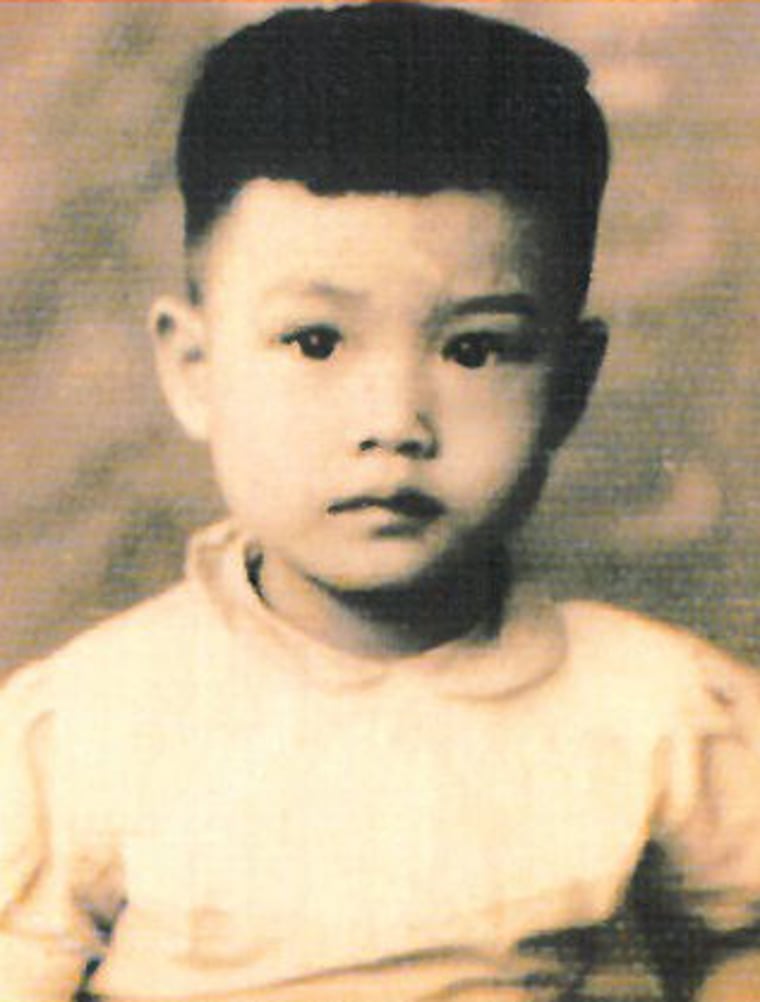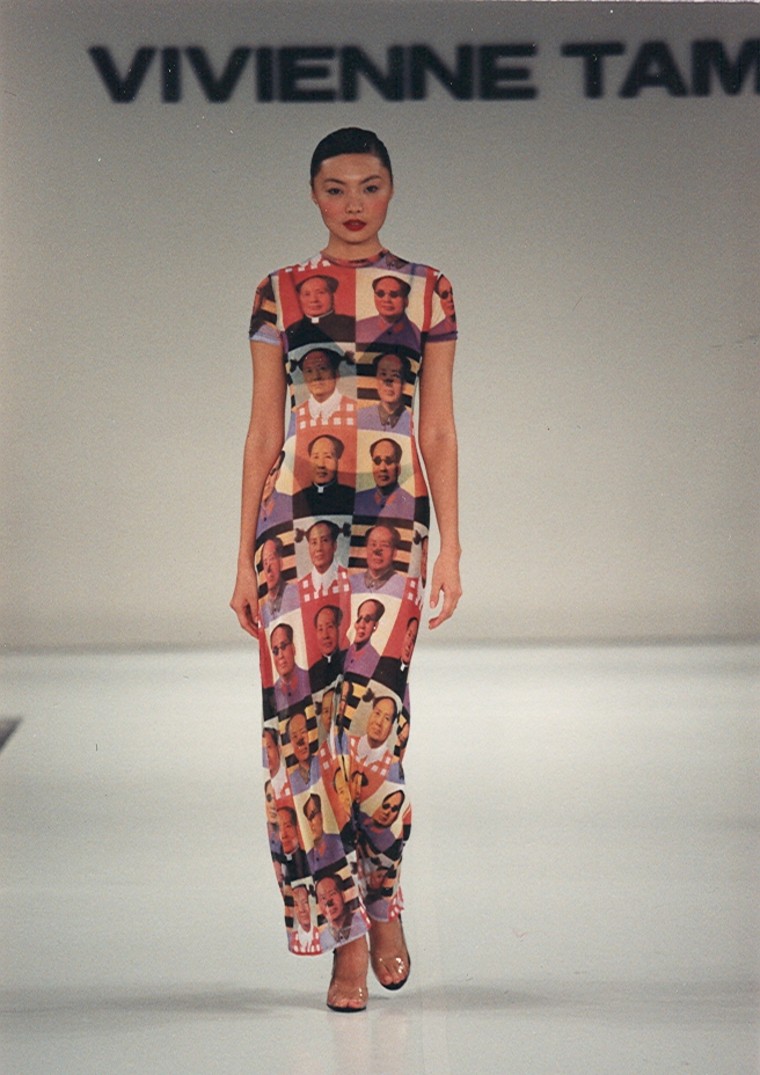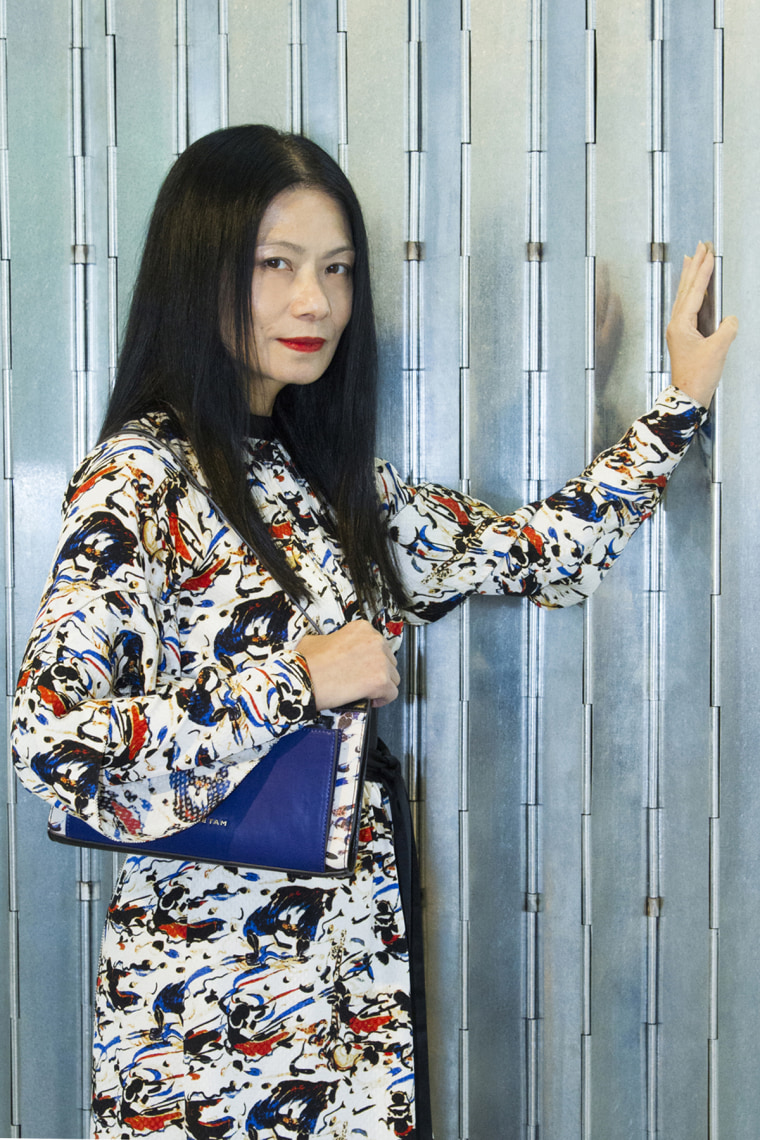Born in Guangzhou, China, and raised in Hong Kong, a young Vivienne Tam discovered her penchant for design when a lack of financial resources meant she had to get creative. While Tam didn't have many toys growing up, she said, she had mother who loved making things and taught Tam to be crafty through imitation and observation.
“I made my own clothes for Chinese New Year because we didn’t have enough money to buy new ones," Tam told NBC News. "And when I made them, they were one-of-a-kind. It gave me a sense of individuality.”

When her early designs caught the attention of others, the budding designer realized how much joy it gave her to receive compliments on something she made. “People loved my dress, and it made me so happy," Tam said. "Everything I had was made by hand: my headband, my dress, even my pencil holder."
Finding her calling as a designer, Tam set off to pursue her studies in fashion design at the Hong Kong Polytechnic University. When she graduated, she realized that Hong Kong had more opportunities for manufacturing fashion, not designing it, she said. So when she received an internship that allowed her to visit New York City, Tam was mesmerized. “I loved the city’s diversity, excitement, and cosmopolitan [lifestyle]. I saw that there were many more opportunities to be who you are,” Tam said.
“When I was growing up in Hong Kong, everyone was only looking to the West. But I asked, why? ... People once told me that products made in China and inspired by China wouldn’t succeed. I thought differently.”
Upon finishing her studies, Tam relocated to New York and set up her first company, East Wind Code. Though she was young, had no financial backer, and didn’t know much about the business, she set off to learn everything she could, she said. She began by attending an open call at department store Henri Bendel, standing in line with over 100 designers with her creations folded in a duffel bag and wearing a few under her coat.
She asked buyers for advice, and she soon learned that trade shows were important though she had barely any money to attend any.
“I had very little money, only $200," Tam said. "I stayed in a cheap hotel. When I think back, it’s quite magical. During [the first] trade show, I had a spot all the way in the back, in the corner. I stole hotel bed sheets to decorate my booth. And then there was a line. I couldn’t even go to the toilet. People wanted to keep buying my things. I had to have a classmate help me. Then word of mouth spread, and that’s how it all began. I couldn’t believe it.”
Even in her early beginnings, the designer’s signature “East meets West” aesthetic has been consistent in her career, motivated by her personal mission to serve as a sort of cultural ambassador for China.
“Perhaps because Hong Kong was a colonial city with a mixed culture, there was a lack of identity," she said. "Growing up, you didn’t know where to belong. I felt as if I didn’t know Chinese culture that well. Fashion design is a part of me, but it was also a tool for me to learn more about the Chinese culture."
RELATED: As New York Fashion Week Approaches, Asian Designers Bring Varied Influences
Not only has Tam has succeeded in bringing Chinese heritage to a global audience, but she’s managed to become a cultural agitator too. In 1995, she collaborated with artist Zhang Hongtu on her Mao Collection, which featured the former communist leader’s face in satirical forms: in pigtails, in sunglasses, and cross-eyed with a bee stinging his nose. Tam reinterpreted the images through sequins, patterns, and different fabrics, and gave them a lightness that contradicted the revolutionary garb that people wore during his rule.
Though the designer struggled to find a manufacturer willing to produce the line, she eventually made it happen, she said. Upon its release, a storm of controversy ensued.
“People from China were throwing stones at the display. There was so much press, both good and bad,” Tam said.

The exposure launched Tam’s name into widespread recognition, leading to her first mention in Vogue, which crowned her as the designer of the month in February 1995.
“During that time period, China was beginning to open up," Tam said. "I wanted to represent a new China, one that had warmth, humor, and growing freedom.” Her risk paid off, and allowed the designer to accomplish the feat of bridging both the fashion and art worlds together. To date, the Mao Collection has been shown in the Andy Warhol Museum, the Museum at the Fashion Institute of Technology, the Metropolitan Museum of Art, and the Victoria and Albert Museum in London, she said.
Twenty one years after its launch, the Mao Collection continues to garner attention. It is available this year through an exclusive collaboration with Opening Ceremony, an avant-garde concept store curating global fashion.
Today, the designer’s passion to ambassador her heritage is as strong as it’s ever been.
“When I was growing up in Hong Kong, everyone was only looking to the West," Tam said. "But I asked, why? China has so much colorful history and a rich heritage. People once told me that products made in China and inspired by China wouldn’t succeed. I thought differently.”
Follow NBC Asian America on Facebook, Twitter, Instagram, and Tumblr.
